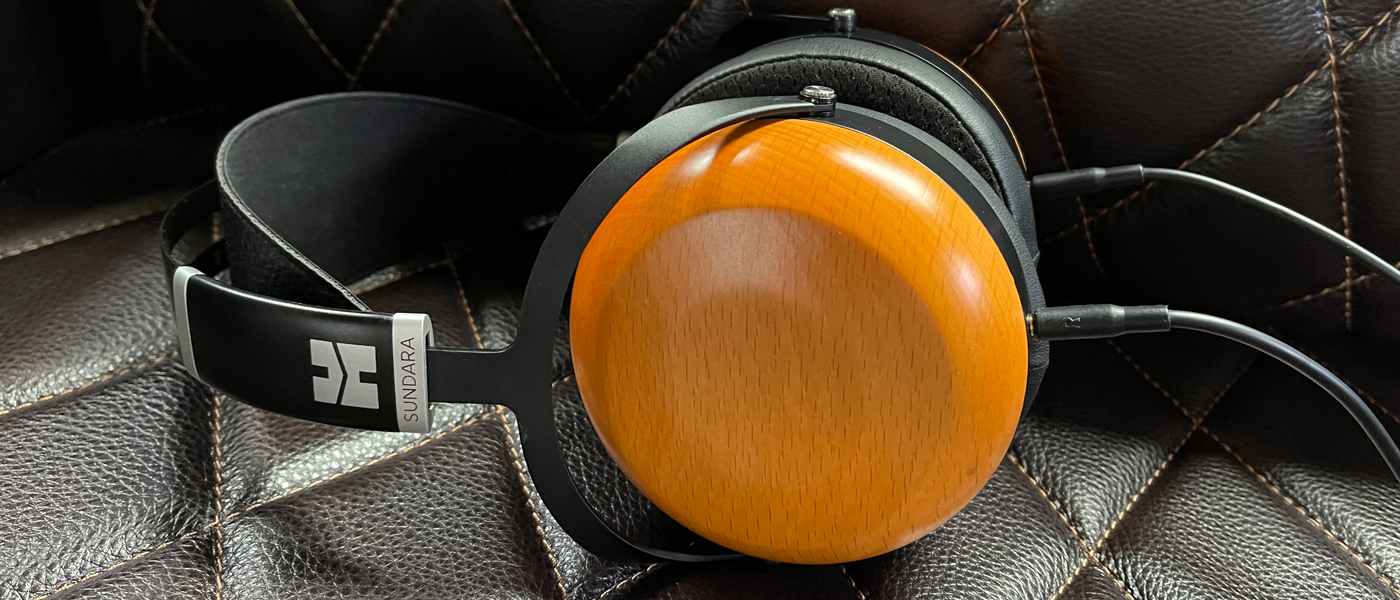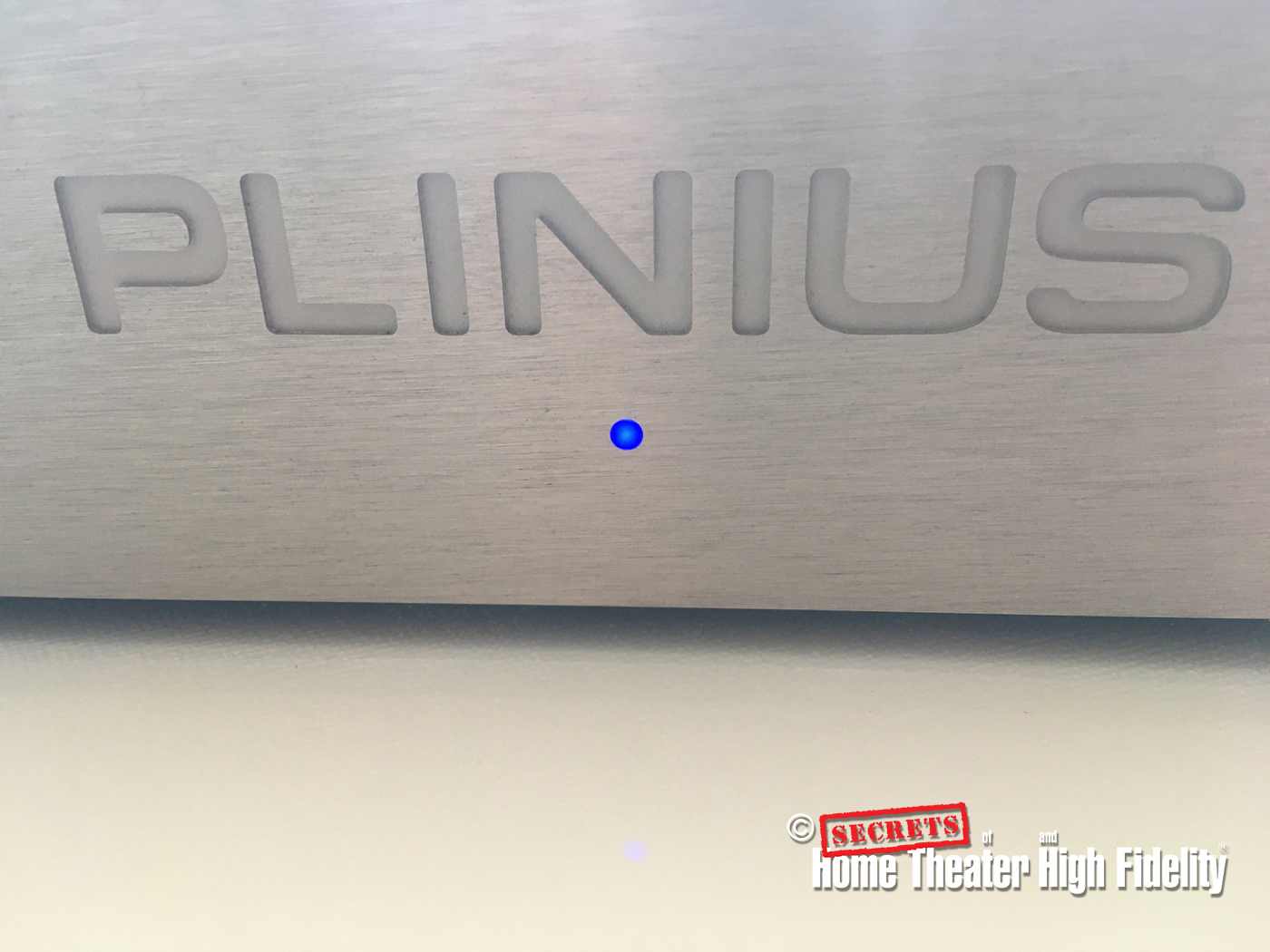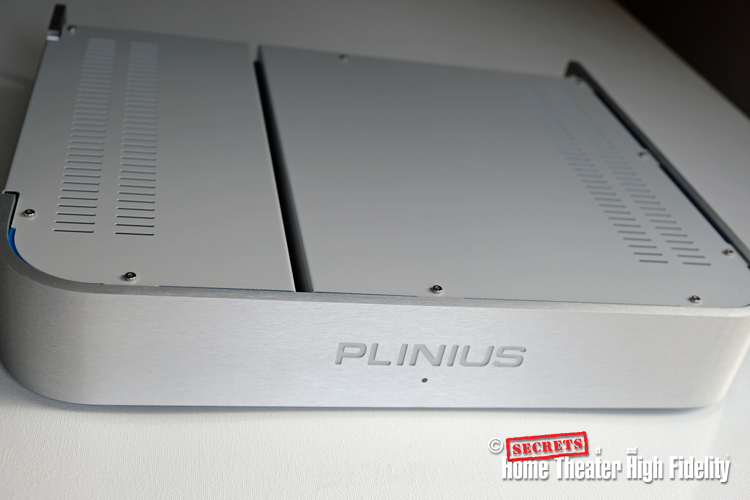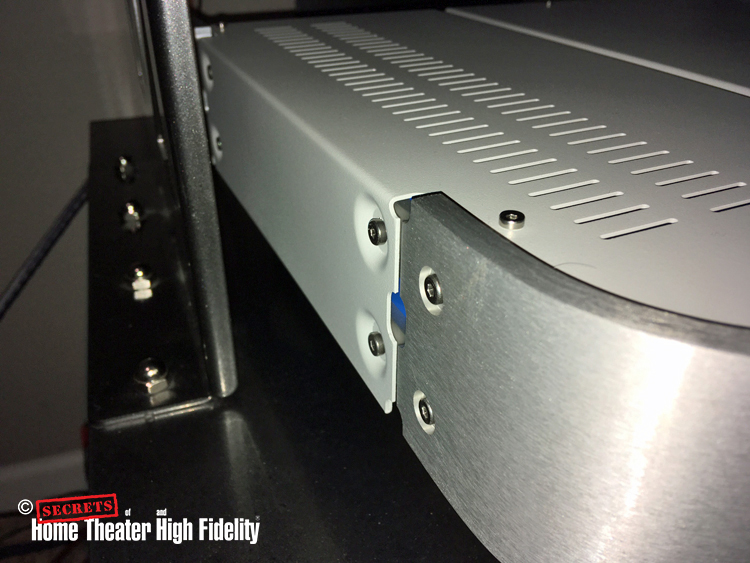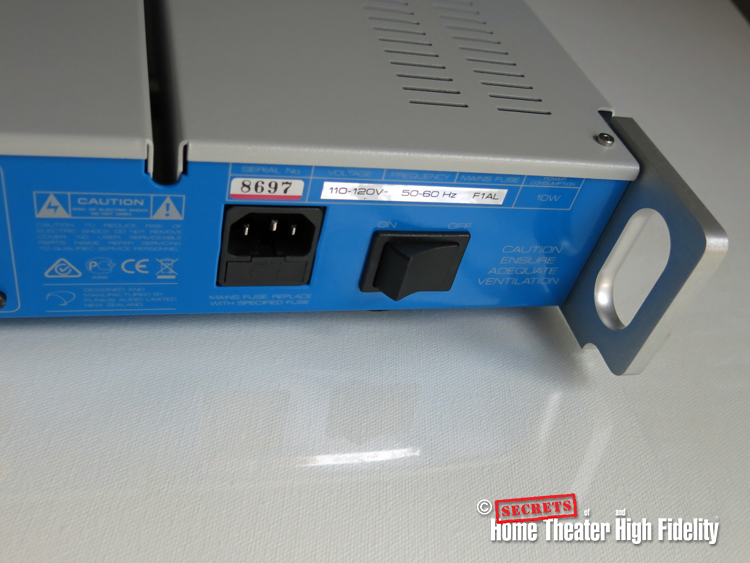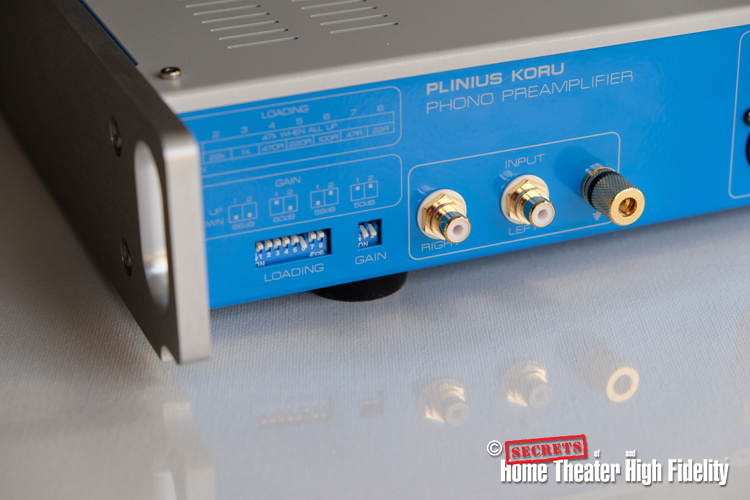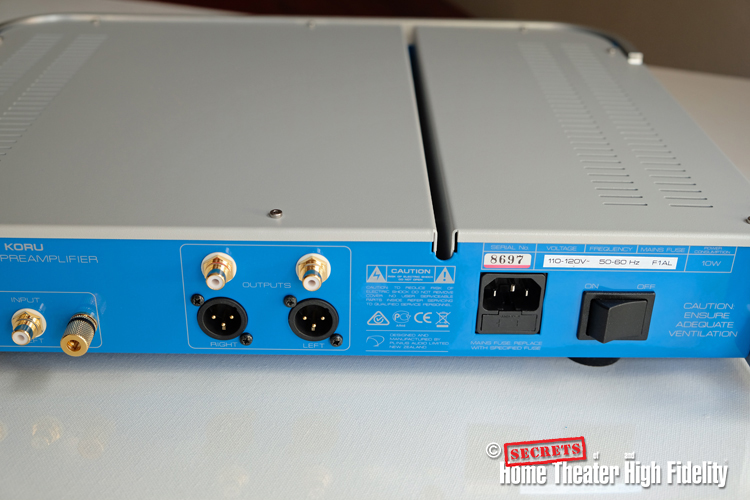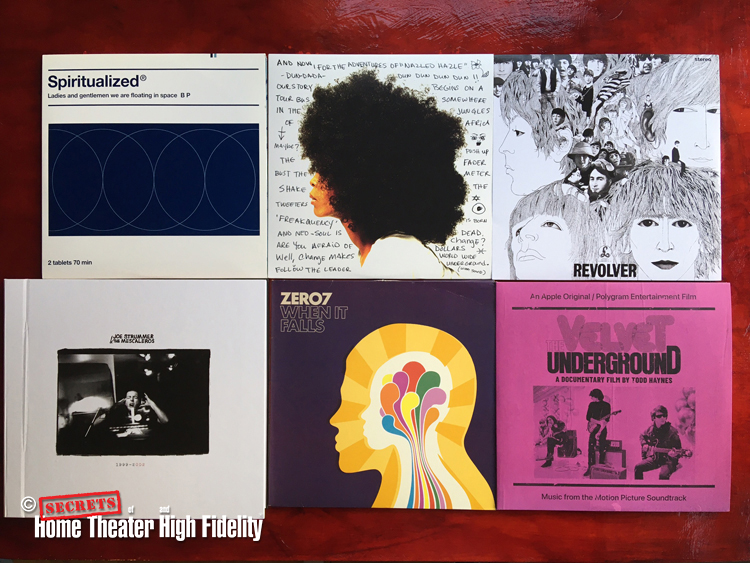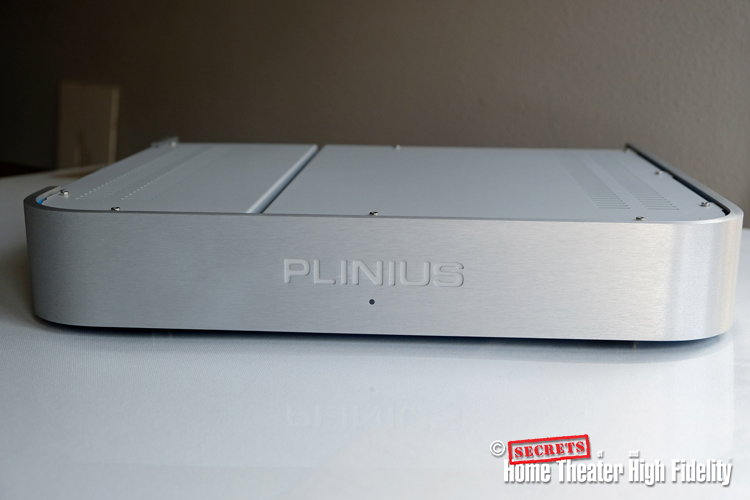The Koru is the flagship phono stage from New Zealand-based hifi manufacturer Plinius. With a massive power supply and the wide range of cartridge loading and gain options needed for moving magnet or moving coil cartridges packaged in a beautifully styled case, it plays well beyond its $4200 price.
Plinius Koru Phono Preamp Highlights
- Unique phono stage with massive power supply and nimble phono amplification.
- Excellent build quality and attention to detail.
- Highly adjustable cartridge loading.
Plinius is a New Zealand-based hifi company founded in 1980. Their designs all feature an elegant yet muscular-looking curved face plate and a design philosophy that calls for actual muscle – as in power – on the inside. At one point the US distributor was in my hometown of Portland, Oregon and so reviewing some Plinus gear had been on my to-do list. By the time I got around to it though the distribution had moved elsewhere, but that’s what shipping is for. After some discussions with Ralph Abramo, the current US distributor for Plinius, we settled on their flagship phono stage, the Koru.
THD:
Typically, <0.01% THD at all levels below clipping.
SNR:
-80dB at the rated input level, A-weighted with 5mV input.
INPUT:
INPUT: RCA Unbalanced.
OUTPUTS:
RCA unbalanced, XLR balanced.
POWER/CURRENT CONSUMPTION:
10W, 0.03A (7W) Idle/Standby.
INPUT CAPACITANCE:
User adjustable, 100pF, 570pF.
ADJUSTABLE GAIN:
50dB, 56dB, 60dB, 66dB
ADJUSTABLE LOAD:
47k ohms, 22k ohms, 1k ohms, 470 ohms, 220 ohms, 100 ohms, 47 ohms, 22 ohms
DIMENSIONS:
Height: 90mm (3 1/2″), Width: 450mm (17 3/4″), Depth: 400mm (15 3/4″)
Weight:
7kg (15lb)
MSRP:
$4200
Warranty:
5 years
Website:
Company:
SECRETS Tags:
plinius, phono stage, phono preamp, vinyl, Plinius reviews, Plinius reviews 2023
All of the Plinius products feature a thick, wrap-around aluminum face plate with “PLINIUS” deeply engraved in the middle. It is a very handsome presentation, and the chassis is made all the more sturdy by having that solid piece anchoring the front corners. The wrap-around piece extends all the way to the back on the right-hand side of the Koru (and most other Plinius gear) but only for a couple of inches on the left-hand side. The remainder of the left-hand side is industrial-chic sheet metal, carefully painted to not distract from the look that the faceplate imparts. This left-hand side difference might not be optimal for you, or it might not even be noticed depending on your setup. I had to pull it out from the shelf to get this photo because I didn’t even notice when I was taking the initial photos.
There is a deep well in the sheet metal top of the Koru that separates and shields the power supply section from the analog circuitry. I have to think that such a structure also makes the entire chassis more rigid (and so less susceptible to vibrations that might come through the shelf).
Secrets Sponsor
The back and bottom form a continuous piece of sheet metal, painted sky blue. It is a lovely design choice that you’ll only get to see on occasion. Take comfort in the fact that the blue LED on the front lights up with the same color.
The tall feet are hard plastic and are bigger and sturdier than would strictly be required for the 15lb Koru.
The same could be said about the oversized power supply switch next to the IEC power cord connection. Now, this really got me to appreciate the design of the Koru. These back-of-the-chassis power switches don’t get used much and that is why most manufacturers don’t put much thought into them. In fact, most hifi products use a standard part that houses the IEC receptacle along with a smallish switch. Even if you don’t have an oversized power cord that blocks access to the switch, it is still an exercise in annoyance to search them out with your fingers as you reach from the front of your rack. With the Koru, you’ll find it easily and instead of a bit of frustration, you’ll get a bit of satisfaction as the switch feels substantial when you power the piece on or off.
As per usual with hifi however, it is recommended to leave the Koru on, only power it off if you’re moving it or changing cables, etc.
That satisfaction will pale in comparison to what you’ll get from the ground lug, however. YES! Ground lug love. That’s how kinky I am. On the Koru, it is oversized (compared to every other phono stage I’ve encountered) and tightens in such a way that it doesn’t immediately come loose again AND it accepts a banana plug AND it is slotted so you could just insert a bare wire and actually secure it in place. I have recently added a couple of ground connections in addition to the cartridge-tonearm ground cable in my main system – a connection from the bearing housing of my Nottingham Space Deck and a wire from somewhere in the middle of the stack-o-stuff that the turntable sits on (multiple layers of two flavors of yoga mat, a ¾ inch thick slab of aluminum, $30 end-grain butcher block from Bed Bath and Beyond and the Nottingham’s own double layer of MDF). Life is far easier if I can attach the various grounds to a fancy multi-connection banana plug and then plug that into the phono stage. Not possible with my Moon 810LP, easy-peasy on the Koru.
Next to the ground lug are the usual single-ended RCA connections for input. For output, both single-ended and balanced connections are available. The manual cautions that only one of the output connection types should be used at a time – that is, choose one, don’t connect them both.
The supplied power cord is thin and lightweight. On the notion that a phono stage wouldn’t need much in the way of current (it is amplifying a small signal to a line level signal, not driving 15” woofers) this might be fine. I tried a couple of other power cords while listening, reports are below.
The user manual deserves special mention, it is among the best I’ve ever read, left me wishing there was more to say about a phono stage. There’s just not that much to write about from a usage standpoint. There’s more to write about from a listening standpoint and that is why you’re here, Dear Reader.
Secrets Sponsor
Okay, still writing then. The outside of the Koru is well thought out, functional and attractive. What about the inside? The primary message from Plinius on the Koru innards is about the power supply: “A virtual battery approach with over 100,000 micro-Farads of capacitance and very sophisticated 2-stage regulation.” The power supply focus is music to my ears.
The cartridge loading options are extensive (see the Specifications section above). Both left and right channels are controlled by a single set of switches which are easily accessible on the right rear of the back panel. The manual recommends periodically toggling all such switches (with the unit turned off, of course) for the purpose of maintenance – extending their usable life. The fact this is in the user guide indicates to me an engineering team that is thinking about quality and longevity.
The RIAA curve is achieved by a combination of passive loading and active equalization. The amplification of the resulting signal is done with a combination of OpAmps and discrete circuitry using N-Channel JFETs operating in class A. The signal path is capacitor-free.
Just a note about Plinus’ less expensive ($1950) phono stage the P100: The circuit design of that model has little to no relation to the Koru. It would be interesting to hear – to see what the Plinius engineers came up with – but that will have to wait for another day. I will say that from pictures, the dimensions, and the fact that the face plate on the P100 wraps all the way to the back on both sides makes it an even more handsome piece of gear.
My review sample was previously in use at a Plinus dealer and so needed no break-in. The user manual recommends allowing the Koru to warm up for 24 hours before serious listening. I can attest to the difference – even if I had the Koru unplugged for only a couple of hours for transport between downstairs and upstairs systems. In fact, I found that the Koru really found its groove after I played about three LP sides.
I started with the Koru in my home theater system – which is now a strictly two-channel system. I’m sorry I don’t care about surround sound etc. Dolby Atmos does indeed produce very clear and distinct sounds, which come from an odd location and distract from the presentation. So, I’m currently using only two channels of a Parasound Halo A51, fed by an Arcam 888 in stereo-direct (i.e., no processing) mode. The speakers are recently revived Gold Sound kit speakers. These are a knockoff of JBL speakers from long ago. A three-way design similar to the L100 but with 15” woofers. I had the woofers’ surrounds replaced and upgraded the JBL midranges to Purify PTT6.5X08-NFA-01 6.5″ Woofers. I learned later that there is a midrange version of that speaker from Purify so maybe I got the wrong thing, but I say all this to tell you – take the strident warnings from speaker builders under advisement, and don’t be afraid to experiment with upgrading old speakers.
The Koru made these old speakers sing. These Purify drivers are a thing – I wrote a little about them in my coverage of the Pacific Audio Fest. They are a cut above any other driver I have heard, articulating voices and other mid-range sounds to a degree not heard before. Using the Koru with an aging Dynavector DV-20XH (not the current model – 20X2) on an even more vintage – but awesome – Denon DP-62L, it was all the more so. Music was engaging and engulfing. I am honestly surprised that this old cartridge can sound as good as it does. With the Koru, the mids are rich and warm with plenty of extension in both the treble and bass directions. I did find that the best sound was achieved when I replaced an IXOS interconnect I was using from the Koru to the Arcam with a Nordost Blue Heaven. I couldn’t wait to get the Koru into my main system.
The main system is: Amplification by Simaudio (usually using the Moon 810LP phono stage), connected by Kimber 8TC to Daedalus speakers. Interconnects in the analog chain are balanced Nordost Tyr. Power cables are Shunyata of different generations, plugged into a Furman IT-Reference 20i. All records are cleaned with an Audio Desk Systeme Pro Vinyl cleaner. The cartridge is a Dynavector XX2-Mk2.
While I thought it was the newly modified speakers in my home theater system that were articulating voices and mid-range so well, when I plugged the Koru into my main system, I learned that this very capable phono stage had a big part in that. Compared to the Moon 810 the Koru throws a wider soundstage, extending well beyond the speakers, but also more forward, into the room. This, combined with the utterly clear mids made records sound immediate, with a jump factor that is more like a live performance, and it revealed details in new ways. The Koru’s presentation of vocals made lyrics easier to understand and flourishes like vibrato or other modulations of all manner of instruments were more apparent than what I was accustomed to hearing. I wouldn’t say that there was anything I was hearing through the Koru that I hadn’t heard before, but the presentation was different. It bordered on being bright or emphasizing treble, so I was motivated to load the Dynavector a little more than I had been with the Sim. This didn’t really change things. I then selected a lower gain from the Koru so that I could dial in the volume more precisely with my P8 preamp and was a happy audiophile.
I have noticed a phenomenon with the amps in my main system – after listening for a couple of hours or more they settle into a quieter and smoother sound. It’s subtle but certain and very enjoyable. I found a similar situation with the Koru but thankfully, it only took about an hour – 3 LP sides, actually. I auditioned the Koru in the dead of winter here in Portland, including our version of the deep freeze that gripped the nation so my cool living room temps might have been a factor. In any case, I reached the desired Koru-state multiple times as I was compelled to try different records to see what the Koru would reveal.
Zero 7 “When it Falls”
This is an audiophile record seemingly lost to the ages. Zero 7 was founded by two recording engineers who utilize guest vocalists who are to die for: Sia, Sophie Barker, and Jose Gonzales top the list. Listening to “When it Falls” with the Koru the vocals were always most prominent in the mix while the intricate details of guitars, synths, and snare drums had their own space and exquisite details. Sia’s masterful modern singing on “Somersault” occupied the space between my Daedalus speakers while guitars and drums were neatly tucked behind. The Koru is really an imaging champ, indicating a high slew rate in its amplification section. The stage is very much forward, out and in front of the speakers so might have played better in a larger room, or if I had my speakers set up along a short wall rather than the long wall.
Erykah Badu “Worldwide Underground”
Have I mentioned that Erykah Badu is a genius? This record is smack in the middle of Ms. Badu’s five studio album discography and supports my theory that long-lived artists tend to put out their best record precisely in the middle of their oeuvre. The Koru articulated Erykah’s Billie Holliday-esque voice to an unprecedented degree for my system which is a big plus because her lyrics are meaningful and playful and worth listening to. This album was recorded with minimal production techniques (for the genre). The Koru feasted on the uncompressed signals and as it did on every record, brought the band to life in front of me. I used this record to test out some power cords. I did most of my listening with a Pangea AC-9. This power cord weighs about the same as the Koru and is my go-to cord when I need to tow a bus out of a ditch. When I switched to the stock cord which might not hold up if you were towing a tricycle out of a ditch, there was a thin veil over vocals especially, but not too bad really. I then tried a Shunyata Venum (probably the first generation Venum) and wowzers! No veils, vocals now had a Technicolor quality and I heard much more attack and sustain in the bass drums which are prominent on this record. At this point, you’ll have to hook me up to that aforementioned bus to get the Shunyata away from the Koru.
The Beatles “Revolver 2022”
In 1964 my two oldest sisters had front-row seats for The Beatles at Colorado’s incredible Red Rocks Amphitheater, they didn’t take their one-year-old brother. Fine. I got back at them a few years later by carrying around (and dropping and tossing about) their 45-rpm single of Yellow Submarine until it was unplayable. In my defense, it was yellow! I thank you for not looking up what that single might be worth today. Will remixed versions of early Beatles records heal these family wounds? No, but that doesn’t mean the new mixes aren’t good. Revolver 2022 is good though it’s not drastically different from the original version. I have a Capital Records stereo version of this record from 1968 – which is itself a remix since the original mix was for mono. I gave it a listen before putting on the 2022 version. It seemed like only a couple of the songs had a large enough difference in the arrangement to make me notice. But the 2022 version, with modern mixing and pressing techniques, brings better dynamics and more separation between instruments. The Koru excelled in my system with either version – articulating plucked guitars, sitars, snare drums, and vocals more thoroughly than my Sim 810 and bringing the excitement carried in this music.
The Velvet Underground “Music From the Motion Picture Soundtrack”
The Velvet Underground was formed in that same year – 1964. If my sisters were really cool, they would have been into The Velvet Underground. I saw the Todd Haynes’ documentary simply titled ‘The Velvet Underground’ at the 2021 Telluride Film Festival. This festival always has excellent theater setups including the sound. The movie is very good with many excellent interviews. The problem is, in order to cut to an interview, the music had to stop. I cursed Mr. Haynes every time the music faded out. Thankfully, the soundtrack was released on this 2LP set. The third track on side A1 is “17 XII 63 NYC The Fire Is A Mirror (excerpt) – The Theatre of Eternal Music.” The Theater of Eternal Music was an ensemble featuring Terry Riley and John Cale (of the Velvet Underground). This is where Mr. Cale did his really extra cool stuff it seems. I’m not certain what instruments I’m hearing on this drone-with-wild instrument (viola?) lead track, but it is mesmerizing. Once again, the Koru impressed me with its amazing ability to resolve the foreground and background and take me on the ride.
Joe Strummer 002 “The Mescaleros Years”
This box set gathers the three studio albums by the Mescaleros plus rarities and demos. Remastering was handled by Paul Hicks – who also helped out with the Beatles’ remasters. With about three songs per side, the vinyl is used sparingly, and the sound is exquisite. “Mondo Bondo” is one of my favorites from the set. I was anticipating that the Koru would not be able to equal the Sim’s magic rendering of Strummer’s gravely-sweet voice. Surprised again, the Koru’s presentation actually struck me as better in that range. Perhaps not as deep in the bass – but don’t hold me to that, A/B comparisons were not possible given the time it takes to swap out a phono stage.
Spiritualized “Ladies and Gentlemen We Are Floating in Space”
It’s hard to believe that this record came out 25 years ago. I guess we have to call it a classic now as it certainly is. I was anxious to hear how the Koru did with the wall-of-sound parts of this record and I was not disappointed. Guitars, drums, horns piled up, and then more of all of the same, all at once. I have no complaints with my standard phono-pre, the Sim 810, but I found it easier to hear and follow each one of the multitudes of instruments with the Koru. But there’s the other part of Spiritualized: The Pixies pioneered loudQUIETloud, and Spiritualized gave us quietLOUDquiet. In audio review speak that’s “macro-dynamics”. I scratch my head to no avail when I try to figure out what parameter of circuit performance would enable great macro-dynamics, but I know it when I hear it. Track 2, “Come Together” (no relation to The Beatles song) ends LOUD with no gap to quiet track 3, “I Think I’m in Love.” With the Koru, all of the beauty is there but with the Sim, there’s a gravity in the room when the quiet drops. One might think that it is a matter of a lower noise floor – but the Koru is dead quiet. Maybe there’s an audio sub-floor of some kind. As “I Think I’m in Love” continues the Koru’s vocal prowess made my smiles all the bigger as Spiritualized lead singer Jason Pierce sings “Think I’m in love” and is answered by his background singers: “Probably just hungry” Cynicism as fine art.
The Plinius phono stage competes way above its price point with exquisite transients and an expansive sound stage.
- Engaging music, brings the band into the room.
- Handsome styling.
- Wide range of cartridge loading options.
- Anti-vibration feet.
- Some sort of built-in warmup, (hey, it’s ok to ask, right?).
- Better stock power cord.
It seems unfair that I’m comparing the Koru to the 3x more expensive Simaudio Moon 810LP except it isn’t because the Koru does compete in this arena. With the Sim music has a profundity while with the Koru it has an excitement, joyfully bringing the band into your listening space. Careful listening for details of particular instruments or vocal qualities revealed that with either of these phono stages, the details were there, with the Koru seemingly even more so, or at least more apparent. You might experience this as a tonal balance that emphasizes the higher frequencies, but I think it is really just the nature of the JFET amplification, faster and more nimble than BJTs. But that’s just my armchair engineering, I recommend you use your ears. Also, consider that a phono stage is just one part of a system with its own characteristics – cable and especially cartridge selection are key. I find that with analog playback joy can be had at just about any price, large or small. The Koru is at a unique price point – there are a lot of phono stages that are (a lot) more expensive and many-many below but in the performance category, the Koru belongs with the more expensive lot. If you’re looking to upgrade your cartridge you might take a look at your current phono stage instead and audition the Plinius’ Koru. You might get the results you’re looking for without changing your cartridge and the extensive loading options of the Koru will open up your future upgrade possibilities.


